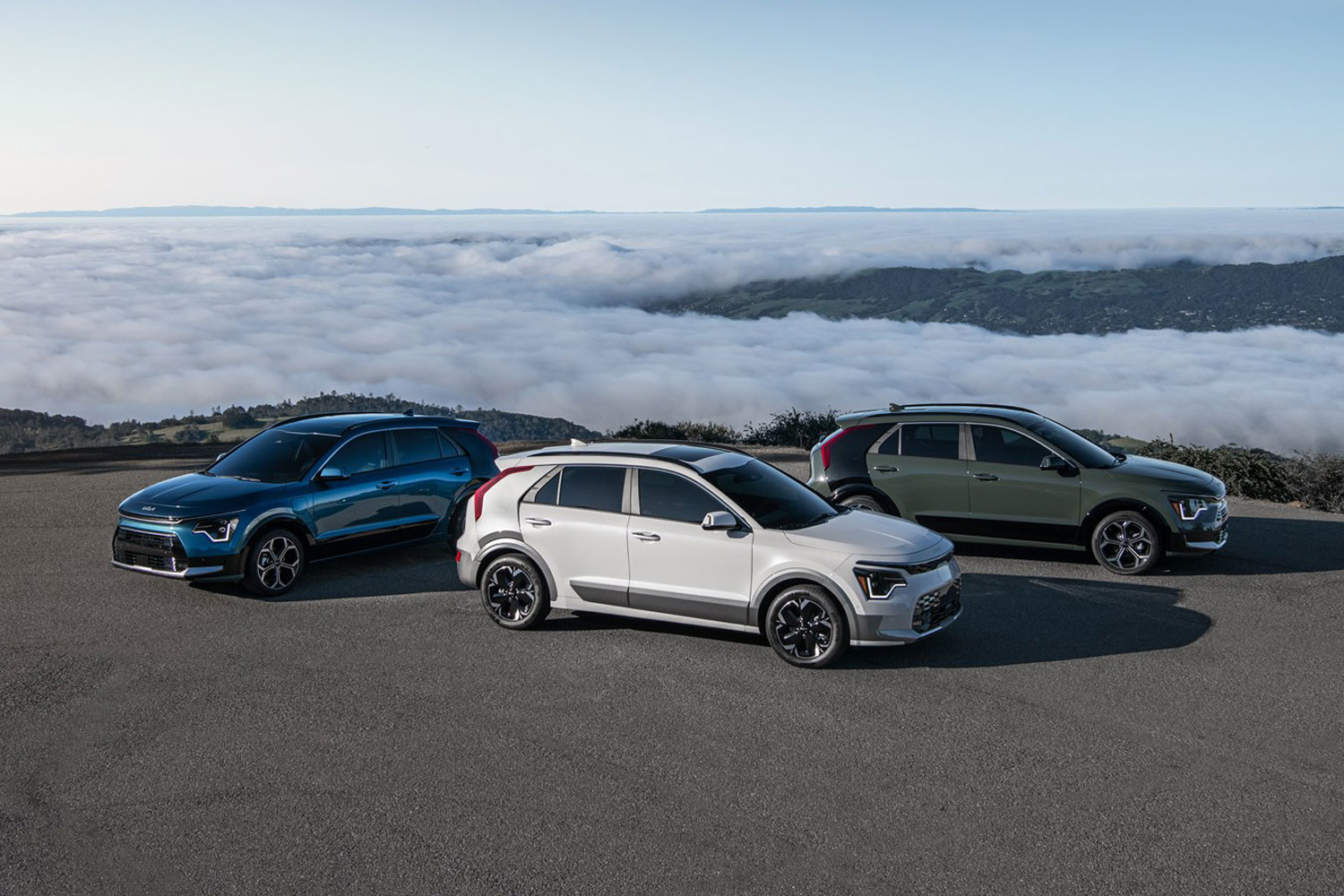5 Engineering Innovations That Came From Race Cars
Motorsport has always been about more than sport.
 Porsche
Porsche
Carmakers love to play up the connection between their race cars and production vehicles, even when that connection is tenuous at best (for example, modern NASCAR). But there are a number of important automotive technologies that first saw the light of day on racetracks. Here we cover a handful of standouts.
The Steering Wheel
Speaking of handfuls, can you imagine driving down the highway with nothing but a tiller to aim your car? That was the case for the very first automobiles. Granted, those vehicles maxed out at school-zone speeds, but as velocities increased, one enterprising driver saw an opportunity to, well, reinvent the wheel. Alfred Vacheron entered a steering-wheel-equipped Panhard et Levassor race car (which made a whole 4 horsepower) in the 1894 Paris-Rouen rally. He didn’t win the race, but his steering-wheel idea caught on.
 Kia
Kia
The Dual-Clutch Transmission
In its pursuit to perfect the transmission and save valuable milliseconds on the racetrack, Porsche started fooling around with a gearbox that combined the efficiency of a manual with the precision of an automatic. The result was the Porsche Doppelkupplungsgetriebe, or PDK. Think of it as two manual transmissions working in tandem; as one clutch releases on the even-gear portion of the transmission, the other engages an odd gear nearly instantaneously. This setup, which made its public debut in the ’80s 962 race car, virtually removes any interruption in power delivery.
The dual-clutch hit the streets decades later, first in Volkswagen and Audi products (dubbed DSG for direct-shift gearbox) and later in the 911. It has since proliferated across Porsche’s lineup. Now you can find dual-clutches in all kinds of vehicles, even low-power, efficiency-minded models like the Kia Niro Hybrid.
Carbon-Fiber Bodies
McLaren was the first constructor to build its F1 car bodies with carbon fiber-reinforced plastic, a lightweight material made by weaving carbon strands and binding them with resin. Engineers can orient those stands in different ways to achieve the same strength and rigidity of metal, but at much less weight.
When the English brand decided to create its streetable technology showcase, the aptly named McLaren F1, it built the monocoque with the stuff. Automakers now often use the once-exotic material for aerodynamic addenda, as well as interior trim, and BMW even assembled its funky i3 electric car around a full carbon-fiber tub.
Direct Fuel Injection
While diesel engines have always sent their fuel straight into the cylinders, gasoline engines started with carburetors, mixing the air and fuel before sending them into the engine. Though gasoline direct injection was common on German WWII aircraft and found its way into some two-stroke compact cars, its real test was in the 1954 Mercedes-Benz F1 cars and the famed 300SLR; the latter spawned the roadgoing 300SL Gullwing, which used a version of the same engine. The Bosch-supplied mechanical direct-injection system provided the precise fuel metering needed to get the most out of these engines. Today, most modern cars have computer-controlled direct injection.
Electronic Suspension Control
In the early ’80s, shortly before his death, Lotus founder Colin Chapman had the idea to give one of his F1 cars a suspension that could adjust to the road in real time using electrohydraulic dampers—and no springs. The result wasn’t initially successful on the racetrack, but it didn’t die.
The 1983 Toyota Soarer was first to bring electronic active suspension to road cars. This system, dubbed Toyota Electronic Modulated Suspension, or TEMS, could vary damping force based on sensor data; it had driver-selectable stiffness settings in addition to an Auto mode that thought for itself. Active and adaptive suspensions are now staples of luxury and performance vehicles, and continue to evolve in step with modern damper and road-sensing technology.
Written by humans.
Edited by humans.
 David Gluckman
David GluckmanDavid Gluckman has over a decade of experience as a writer and editor for print and digital automotive publications. He can parallel park a school bus, has a spreadsheet listing every vehicle he’s ever tested, and once drove a Lincoln Town Car 63 mph in reverse. When David’s not searching for the perfect used car, you can find him sampling the latest gimmicky foodstuffs that America has to offer.
Related articles
View more related articles